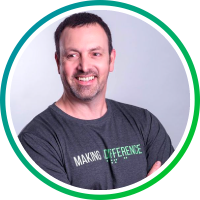Top 5 Community Rated Sessions at JFrog SwampUP 2020

What better way to wrap up JFrog’s annual swampUP DevOps user conference than with your community feedback! The online conference made it possible for the DevOps community to get together from all over the world. Making this DevOps user conference more exciting than ever!
Here are your top 5 rated sessions, in no particular order, based on your content and presenter ratings.
Against the Grain: JFrog’s Bold Roadmap



It’s not surprising that JFrog’s annual roadmap keynote delivered by our executives would be among the top 5 swampUP 2020 talks, with the following highlights:
- Accelerated software distribution, with peer-to-peer distribution, Artifactory CDN distribution, and hybrid multi-cloud distribution with Artifactory Edge nodes.
- Metadata services for improving visibility, security, quality, and provenance. Exposing metadata via GraphQL public APIs. Available soon.
- JFrog Pipelines improvements, including running your build nodes on Kubernetes, matrix builds to parallelize and speed up your builds, an SDK so that you can build your own reusable pipeline steps, and some key UI features.
The concept of BinOps was introduced. Representing a new way of looking at your CI/CD pipelines that puts the focus on the binary executables that run on your machines.
Read more about the JFrog’s bold roadmap >
Lessons Learned from Cloud Migrations: Planning is Everything

Chris covers a range of topics, starting with the factors that go into deciding which cloud architecture you want to target for your migration project. He squarely takes on the common assumptions about cloud computing, and dissects these assumptions to uncover their validity. Some of Chris’s key tenets:
- Embrace cloud native concepts. Containerized applications running on K8s clusters present some unique opportunities. You can increase your density and flexibility when it comes to cloud utilization.
- Never optimize for multiple factors concurrently. Refactoring your legacy applications and migrating to the cloud at the same time is fraught with risk. According to Chris, “The intersection of good, fast, cheap doesn’t exist when it comes to the cloud”.
- Optimize cloud spend. Migrating to the cloud saves money, if done right. If done poorly, it can cost you even more. Chirs talks about what it means to do it right.
- Let business needs guide your actions. According to Chris, “the cool things come after the things that pay for people’s food and shelter”.
Cloud migrations require forethought and planning. Chris presents a great framework for guiding your actions.
Kubernetes in Production

In his session, Brendan provides valuable tips for creating a K8s cluster that is able to handle production workloads. Being a huge proponent of testing, he talks about how to go from source code all the way to a production K8s cluster, performing tests at key points along the way. “Test until fear turns into boredom.” He discusses why traditional approaches to unit and integration testing are fraught with problems, and proposes a solution that involves more testing at multiple stages.
Once you’ve created your image, Brandan covers a number of best practices for configuration and load testing prior to deploying in production environments. He explains the importance of good test coverage and how to build systems that are incapable of making mistakes.
Other tips from Brandan include how policy and governance can bring standardization, stability and consistency to your K8s clusters. He also talks about adding cluster daemons to your clusters, alongside your code, for handling common tasks and setting up your clusters for success.
Kubernetes Meets Real World: The DevOps Edition

If you want to understand how to make your K8s implementation enterprise grade, then this is the session for you. Jessica goes through the type real world considerations that can keep you up at night, related to architecture, resilience, security, scalability. She then caps the conversation with how to build confidence in your implementation. Jessica mentions and demonstrates various tools and technologies.
Read more about Jessica’s session in this blog post >
Bending Space-Time with the Help of Your Peers


Gal and Shimi explain how you can easily end up with a software distribution challenge when deployment cycles are frequent, there are a large number of runtimes, and the image sizes are large. If your runtimes try to update automatically and concurrently, this burst of consumption creates an enormous performance challenge.
JFrog’s new peer-to-peer (P2P) approach is designed to handle local distribution to a large number of endpoints. Examples include hundreds or even thousands of IoT devices or server farms with hundreds of Kubernetes nodes. Centralized approaches like software distribution CDNs and edge nodes can’t satisfy the concurrency requirements of these bursts of activity.
Read the complete synopsis in this blog post >
>>>>> Check out the full agenda on-demand recordings for the topics that may interest you. <<<<<




